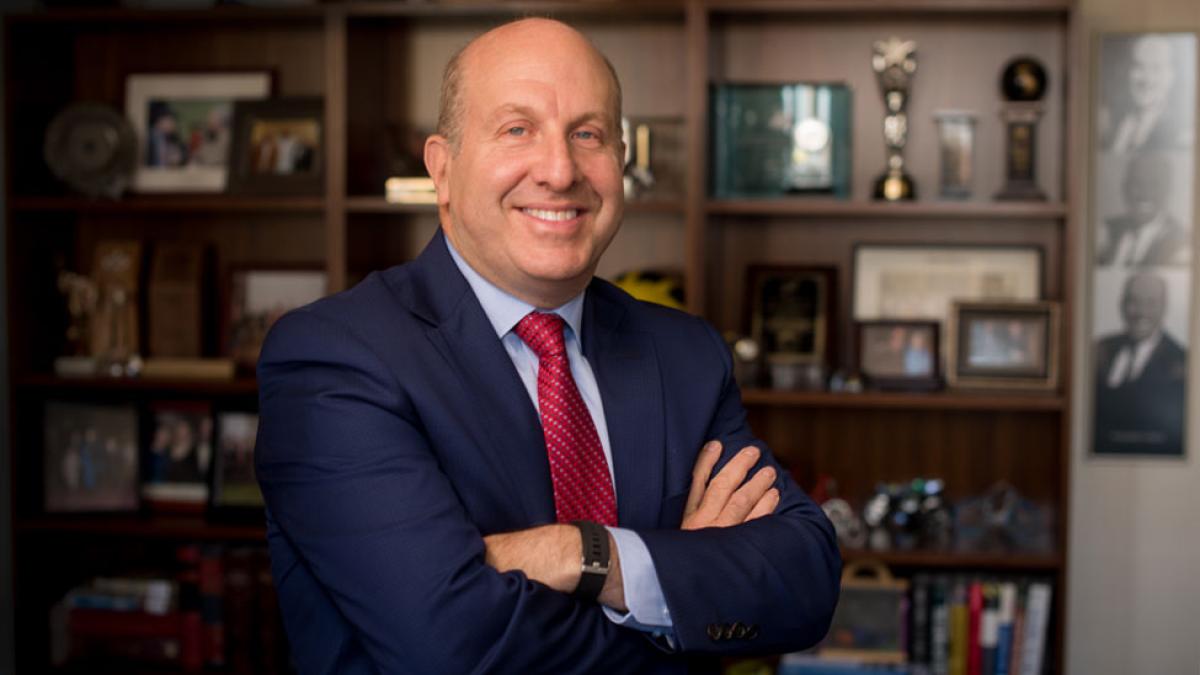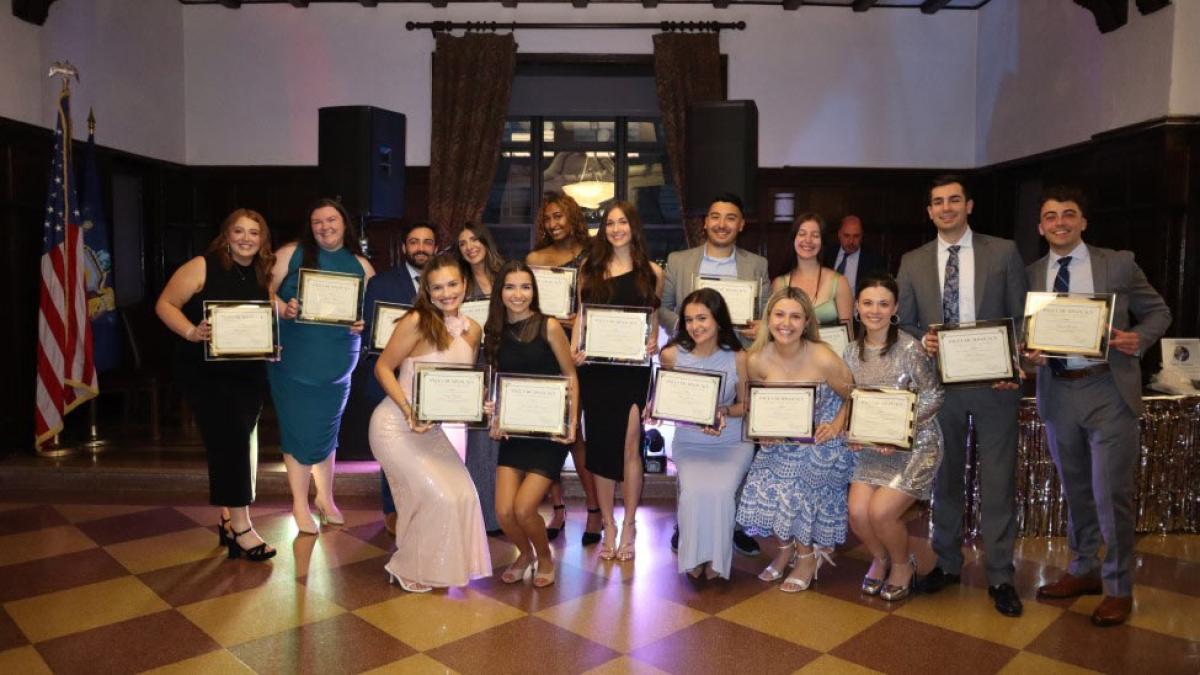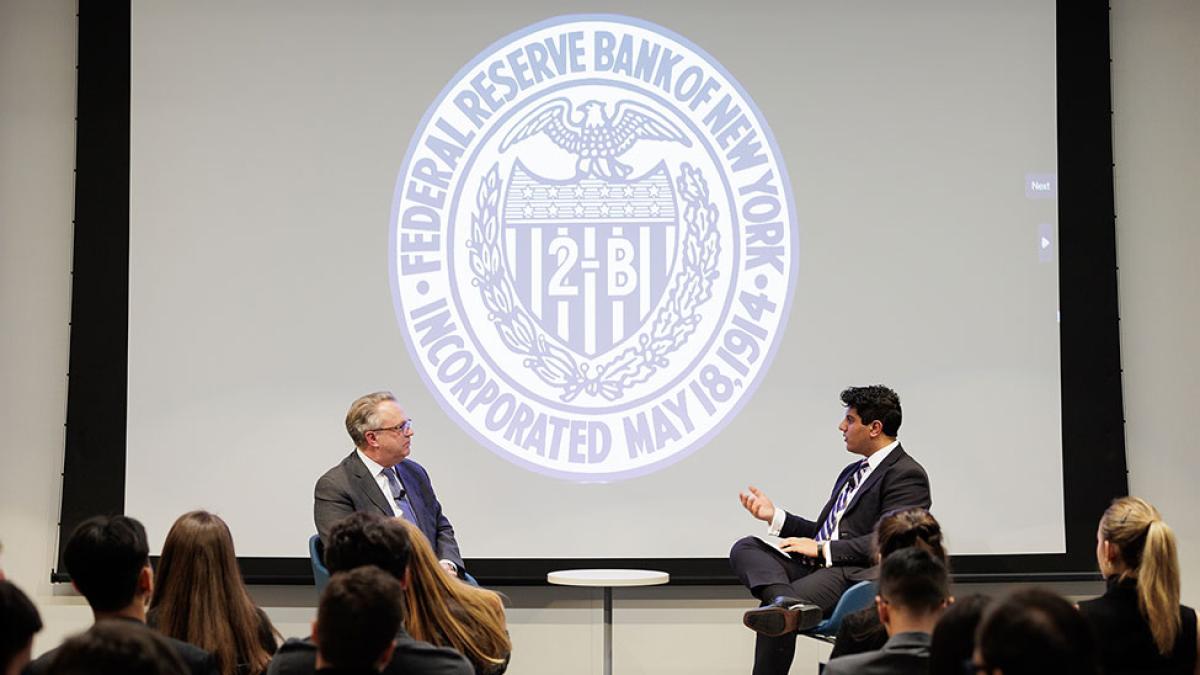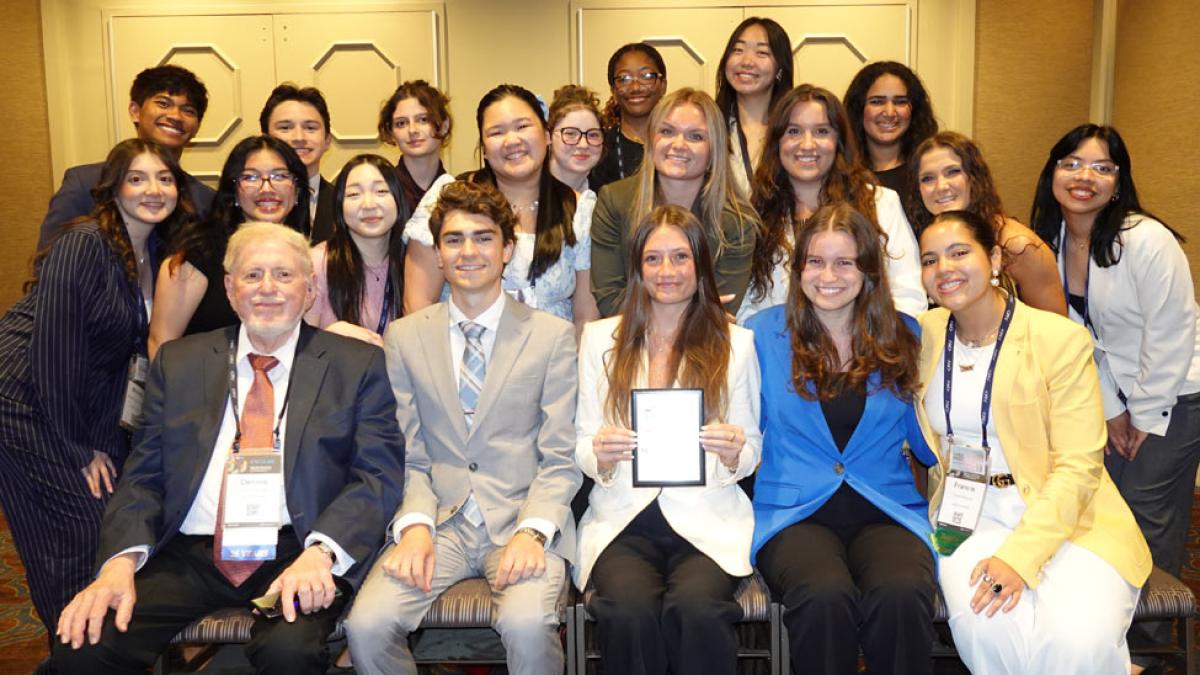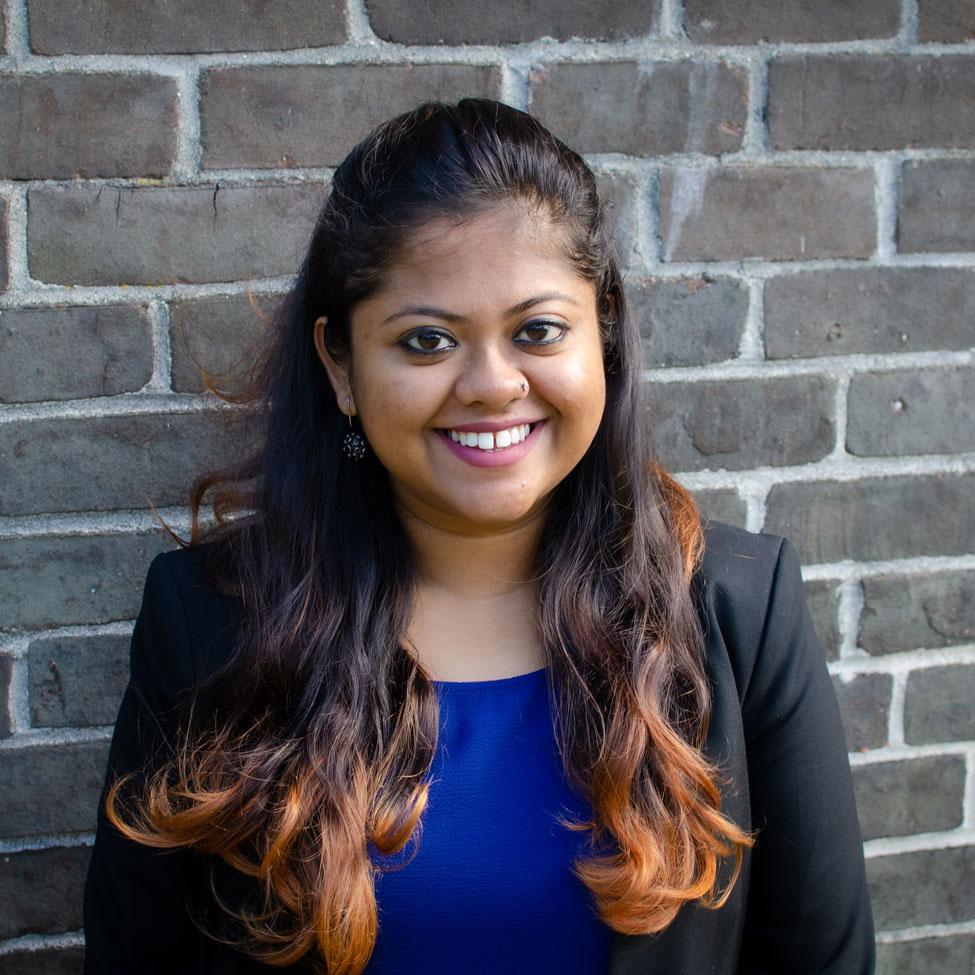
Everyone needs will but how we make one is changing: QUT research
The other authors of the paper are Dr Ho Fai Chan, QUT Research Fellow, Professor Uwe Dulleck Director of QUT’s Centre for Behavioural Economics, Society and Technology (BEST Centre), and Adjunct Professor Bridget Crawford from the Elisabeth Haub School of Law at Pace University in New York.
Professor Randolph Mclaughlin on Trump FBI Probe
Newsy: Professor Randolph Mclaughlin on Trump FBI Probe.
Ellen Burstyn turned down a 'whole bunch of money' for Exorcist sequel until producers created a scholarship fund for young actors: 'That's my price'
Burstyn agreed to return to the Exorcist franchise after being in the 1973 original. She agreed after producers created a scholarship for actors at Pace University. The program is affiliated with her workshop, the Actors Studio. Burstyn revealed she had finished most of her part for the upcoming sequel. It will be helmed by Halloween Kills director David Gordon Green.
Ellen Burstyn Explains Why She Agreed to 'Exorcist' Sequel After Turning Down 'Whole Bunch of Money'
"The next thought that came to mind was, 'My price is a scholarship program for talented students at our master's degree program at Pace University. That's my price,' " Burstyn told THR. "So I then went back and upped their up and ended up getting what I want. And I've got a scholarship program for young actors."
Cybersecurity for Kids: Expert Tips
Knowing cybersecurity basics is essential to staying safe online, often called digital hygiene, according to Dr. Pauline Mosley, a Computer Science professor at Pace University. According to the ITRC, more than 1.3 million children were victims of identity theft in 2017, and 50% of this subpopulation is under the age of six. “Educating them in the basics of cybersecurity not only protects their identity, but it literally could save their life,” Dr. Mosley says.
The Ever-Evolving Supply Chain
Issues with your delivery? Lubin Assistant Professor Pritha Dutta, PhD, discusses global supply chains, and how the past few years have empowered consumers to rethink their consumption habits.



Nowadays, it’s hard to watch the news without hearing some mention of supply chain problems. Lubin Assistant Professor of Management and Management Science Pritha Dutta, PhD has spent much of her academic career studying this very topic—particularly, operational and strategical issues faced by supply chains, and sustainable supply chain management.
Dutta was kind enough to chat with Pace Now about a range of topics related to her expertise—from her current research interests, to what the average person should know about global supply chains, to why disruption and innovation makes this field an exciting one for young business students to join:
In regards to global and national supply chains, how have the 2020s been unlike previous decades?
When we think of supply chain, the idea is that it’s something linear. But it’s not; it’s more like an intricate network consisting of manufacturing facilities, warehouses, distribution centers, logistics companies etc. spread across the world. As we saw during the pandemic, disruption or delay in one link can have major impact on the entire network.
It became very evident, how vulnerable these networks can be. It also really brought to light the downside of global supply chains. We saw how relying solely on overseas suppliers can negatively impact supply chains.
The other main issue during these two years has been the labor shortage, which we are still talking about—not having enough people on the floors of factories, not having enough truck drivers to move materials from plants to warehouses, or to retail stores. The importance of labor in the efficient management of supply chains is undeniable.
The last thing I want to mention here is that we saw many businesses opting for omni-channel strategies—where you have the option to shop in the store, shop online or you can order online and pick-up in store. It gave consumers much more flexibility, which was needed during the lockdown. The pandemic forced many businesses to adopt an omni-channel strategy which they might not have had before—which requires an adjustment in the way businesses manage their supply chains.
What long-lasting effects do you think the COVID-19 pandemic might have on global trade and supply chains?
Over the years, companies were focused on making supply chains leaner—you don’t want to have excess inventory, you want to reduce costs, move your shipments only when it is needed or right before it is needed.
That’s something that will not work anymore. Companies are now moving toward the just-in-case model. You need to have excess inventory just-in-case there is a new disruption or demand surge.
Secondly, every crisis is an opportunity for innovation. The COVID-19 pandemic has pushed companies to be more innovative in terms of the technology they are using—better use of advanced analytics for demand forecasting, increasing supply chain transparency and traceability using technology like blockchain, internet of things etc.
And in regards to globalization—previously the focus was on outsourcing operations, specifically manufacturing, to South Asian and Southeast Asian countries to reduce costs, which has been a driving force for supply chain innovations in the past. But there has been a shift—conversations and discussions to moving things back on-shore.
This brings us to the discussion on the need for diversification of suppliers. Companies need to look at broader geographic diversification of their supplier base right now. Having some sort of capacity of production to meet the demand regionally will also be important. Definitely these are shifts we are seeing, and are here to stay.
When we think of supply chain, the idea is that it’s something linear. But it’s not; it’s more like an intricate network consisting of manufacturing facilities, warehouses, distribution centers, logistics companies etc. spread across the world. As we saw during the pandemic, disruption or delay in one link can have major impact on the entire network.
Why should the average person be informed about the workings of supply chains?
It affects all of us. More so for the common people, we care about costs. And if the costs rise for the producers—if it rises throughout the supply chain—it ultimately affects us.
Is it a good time to buy a car? Definitely not, because there are global chip shortages, which are affecting production of cars and subsequently prices of cars.
It’s also important I feel because we’ve become so used to the Amazon Prime two-day deliveries that when it takes a little longer we get restless and agitated. Throughout the pandemic that was a learning process for consumers as well—know when to place your order, understand you might not get something right away.
Furthermore, it’s helped us understand our consumer behavior. Collectively, we do so much mindless consumption, we don’t necessarily think about what goes on between us placing an order and the actual package being delivered. I am hopeful that it’ll make us more mindful of the way we consume. Instead of placing an order on Wayfair for a couch, why not check out your local market or thrift store?
Finally, it can make us more sustainable. Personally, the disruptions of the past few years changed the way I shop for groceries. During the lockdown, I switched to startups like Misfits Markets and Imperfect Foods for grocery delivery, which are also helping to reduce food waste. These are the innovative spaces supply chain disruptions have created.
Anything else you’d like to add?
In many of these sectors we’ve already seen that the issues are getting resolved slowly. But there are still some areas—in healthcare, for example, I’m sure you heard about the baby formula shortages—where there are issues. There might be some areas where there is longer-lasting impact. Not only COVID-19, but any geo-political event may cause disruptions in global supply chains. Supply chains have to be more resilient to be able to continue working effectively and efficiently even in the face of crisis.
What I want to say to students is that this is an exciting area—and it’s becoming more and more exciting because of these opportunities for innovation and looking at things differently. Get involved! It’s a great time to be studying this subject, and going into this field.
More from Pace
The Great Resignation. Remote Work. COVID-19 and the future of work. You’ve heard it all, but what does it mean? Talent Management expert Ibraiz Tarique, PhD, breaks down the ever-evolving relationship between employers and the people who truly make workplaces tick.
Through Digital Trash, an augmented reality art exhibit, Professor Will Pappenheimer and his mobile media students are elucidating an often-unseen problem in a truly innovative way.
Through her documentary film, How to Power a City, Dyson Professor Melanie LaRosa explores the people leading initiatives that are helping to bring clean energy to cities across the country.
Not Your Ordinary Tour Guide
Want to learn more about Seidenberg? Ask T-Bot, the brainchild of the boundary-pushing Robotics Club on Pace’s Westchester Campus.
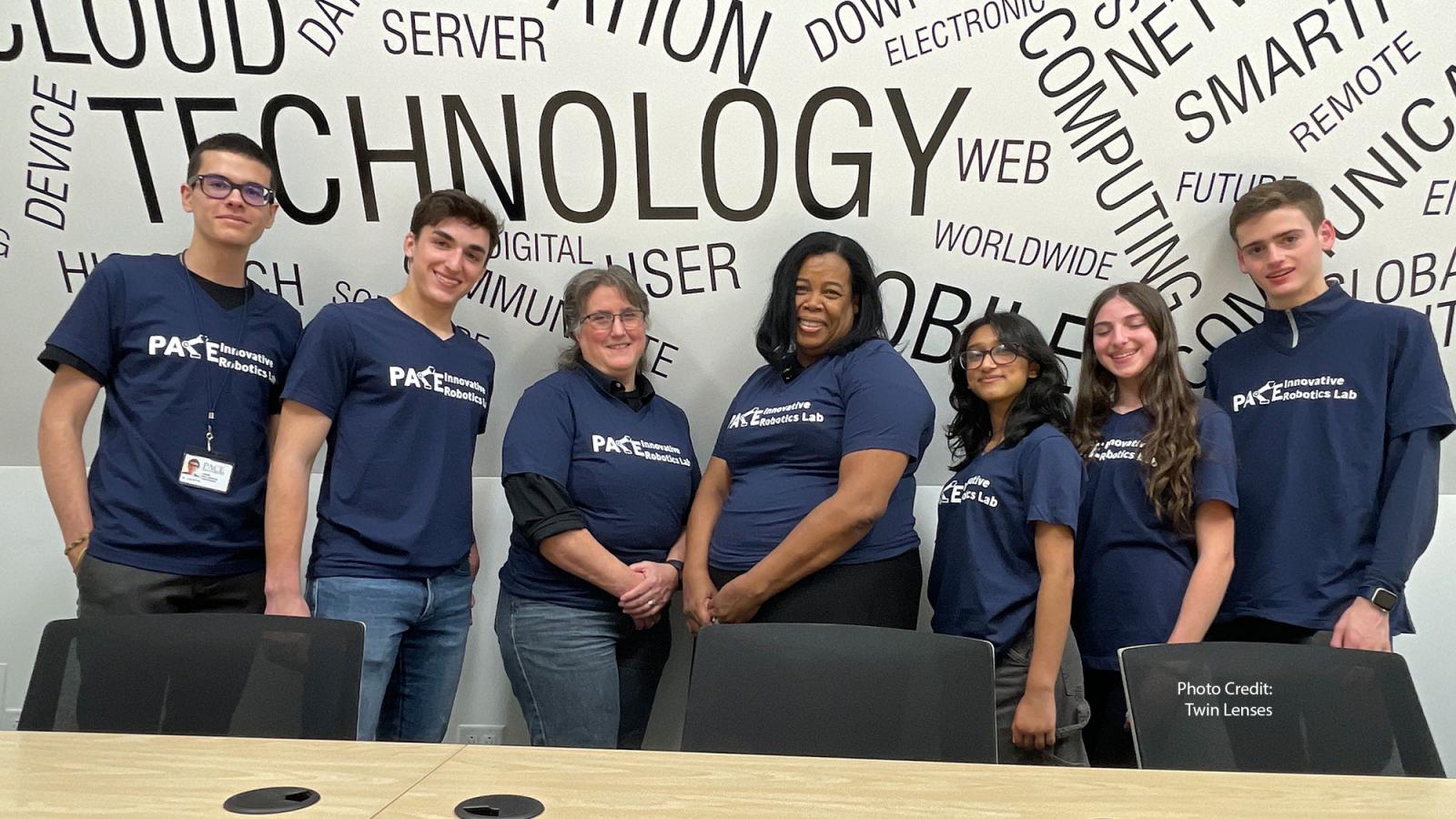
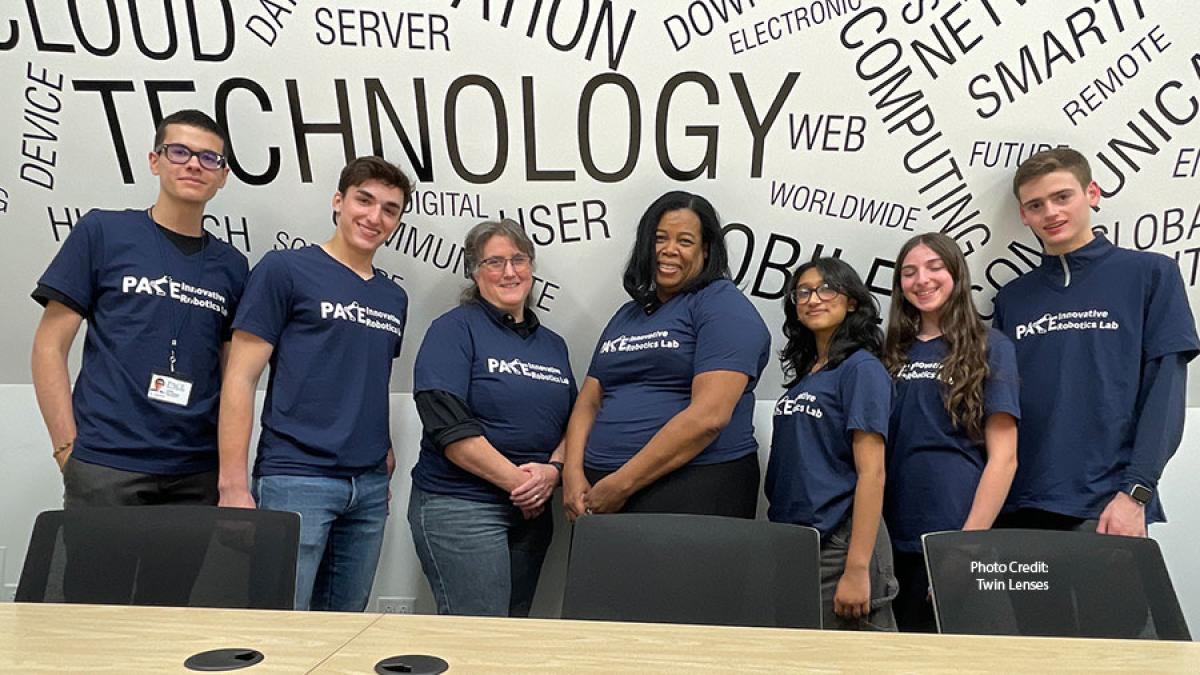
“The technical name is Jupiter, but we decided to do a spinoff and call it T-Bot—since T-Bone is our mascot.”
Seidenberg Professor of Information Technology Pauline Mosley, DPS is referring to one of the Pace Community’s newest members. T-Bot, as it is affectionally named, is no ordinary robot. In fact, it’s Pace’s newest recruitment tool.
“It started in 2020—that August, I received a Provost scholarly research grant from Pace for around $4,000,” says Mosley. Seidenberg Dean Jonathan Hill was supportive of this initiative and purchased another Jupiter Robot as well as financed training for the research team via Teams from Singapore for a week. “With that, I purchased a Jupiter Robot.”
A Jupiter Robot is an integrated and open artificial intelligence development platform which can be used to develop applications to solve real-world problems—ranging from autonomous navigation, to speech interaction, to much more. In other words, it’s a pretty cool robot.
One of the reasons Mosley was interested in purchasing a Jupiter Robot is she felt it was more collegiate—a launching point for unique collaborative projects, and a means through which Pace students would be able to compete in competitions, both nationally and internationally. Furthermore, it would establish Pace as a leader in robotics—a place in which students from all over the region could congregate to think, geek out, and work on unique research projects.
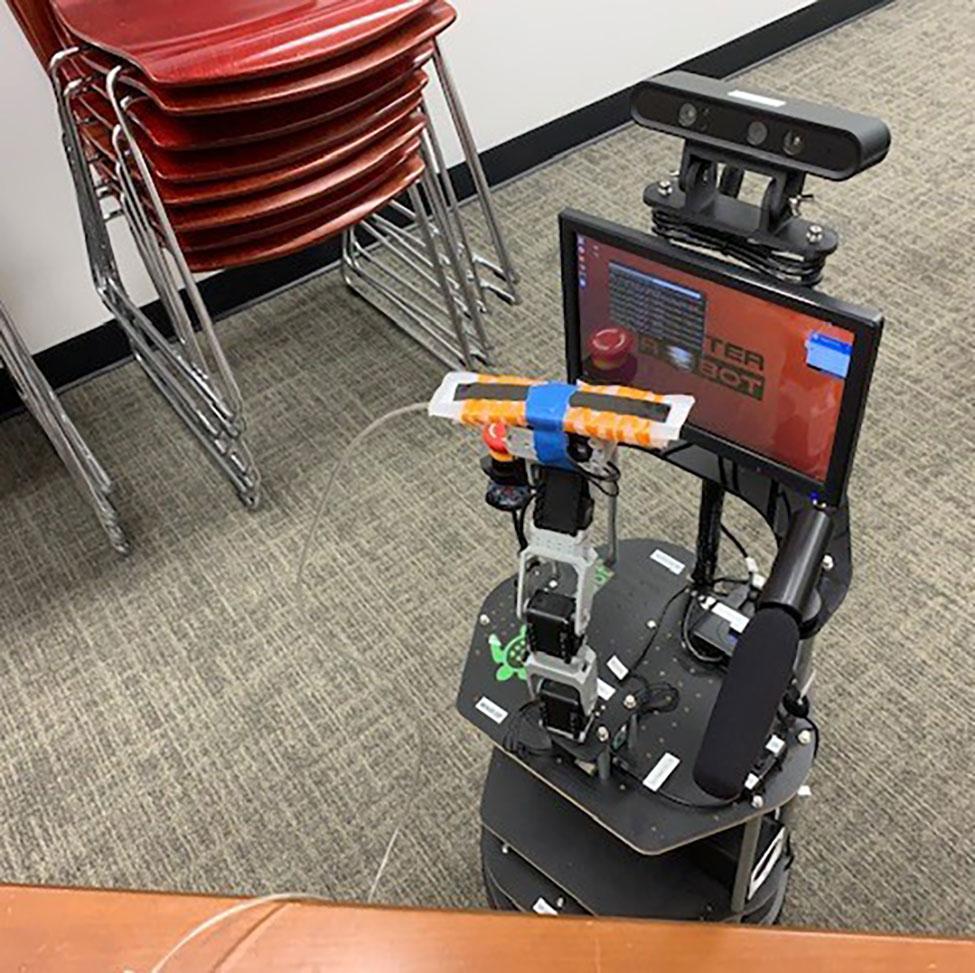
Which is exactly what has happened. The Pace Robotics Club, led by Mosley and Seidenberg adjunct professors Matt Ganis and Lisa Ellrodt, has essentially emerged as a result of Pace’s acquisition of the Jupiter Robot. A combination of local high school students looking to do advanced robotics research, current Seidenberg students of all levels, as well as faculty members, have coalesced around this exciting new technology.
“That’s how the club got started. It works with gifted high school students from the Westchester County area, it works with our undergraduate students, and graduate and PhD students. It’s a really nice cross-section of intellect that’s working together trying to solve problems,” says Mosley.
“This is the technology of tomorrow—the high-schoolers, undergraduates, and PhD students involved in this club are really going to be solving the issues of today using the technology of tomorrow—that’s a big positive,” added Ellrodt.
The club’s major project is the development of T-Bot—a robot that is designed to behave similar to a tour guide. Currently, T-Bot is programmed to inform its audiences of the many benefits of a Seidenberg education—discussing Seidenberg’s labs, its cybersecurity program, the accomplishments of Cybersecurity Director Li-Chiou Chen, and so much more.
Mosley hopes that T-Bot could be, in addition to a selling point in itself, a vehicle to consistently deliver information that may not typically be offered on a tour. For example, the fact that Seidenberg boasts an above average percentage of women faculty and students, and a robust mentoring network aimed to increase the number of young women in the cybersecurity pipeline.
“We have a lot of tours, we’re always hosting open houses, parents always want to know more about Seidenberg in general. We have great students who do that—sometimes, tour guides are Pace students but not Seidenberg students, who might not know our programs, the individuals in our schools, to really market Seidenberg well. That’s where the idea came to me—if we could get this robot, and take highlights of our school, and have the robot say it—it’d be a complement to a human tour guide, supplementary in that it would represent our school very well,” said Mosley.
While T-Bot’s current focus is on Seidenberg-specific tours, the potential projects and possibilities for T-Bot are endless. For example, Ellrodt is in the early stages of envisioning a collaboration with Seidenberg’s Blue CoLab, a STEM laboratory aimed at innovating real-time water monitoring to improve water quality and overall health, directed by Professor John Cronin.
“Blue CoLab, they have a boat with sensors on it that monitors the environmental information around Choate Pond,” notes Ellrodt. “We thought it’d be really cool to have T-Bot say what those readings are.”
The future is certainly bright for Pace’s Robotics Club. With increased funding, Mosley hopes to be able to assemble a group of talented students to compete in international robotics competitions, and further the influence of Pace through strong relationships with local high schools and high schoolers interested in the field. But more than anything, she is proud of the environment that T-Bot and the Robotics Club have built—one of intellectual curiosity, innovation, and shared community.
“In Westchester, to my knowledge, there doesn’t exist a physical think tank or a hub, where minds can just come hang out and think. Where is there a space where people could further the discipline and push the limits of programming—where do those kids hang out? My goal is to create a space for these inquisitive minds that love to tinker, love to code, love discovery and exploration as well as innovation. I’m looking to create physical and virtual spaces where innovation and experimentation are cultivated and encouraged in a safe environment, monitored by positive faculty and students alike.”
More from Pace
"We’re down to the final stretch of the academic year at Pace University, and it’s turning out to be a really big finish," writes President Krislov in his May message to the community as he discusses Commencement, the Sands School of Performing Arts, and more.
How will ChatGPT and the emergence of AI language models change learning and higher education? Our faculty weighs in.
Ka’ramuu Kush, a faculty member of the Sands College of Performing Arts, is sharing wisdom and experience gained from many years as a working actor, director, and writer with students—and has already made quite an impact.
Pace Named ‘Best of the Best’ for LGBTQ+ Students
Pace University has been named as one of the 40 best colleges and universities across the country for LGBTQ+ students by Campus Pride, the preeminent resource for LGBTQ+ leadership development, inclusion and advocacy within higher education, the university today announced.
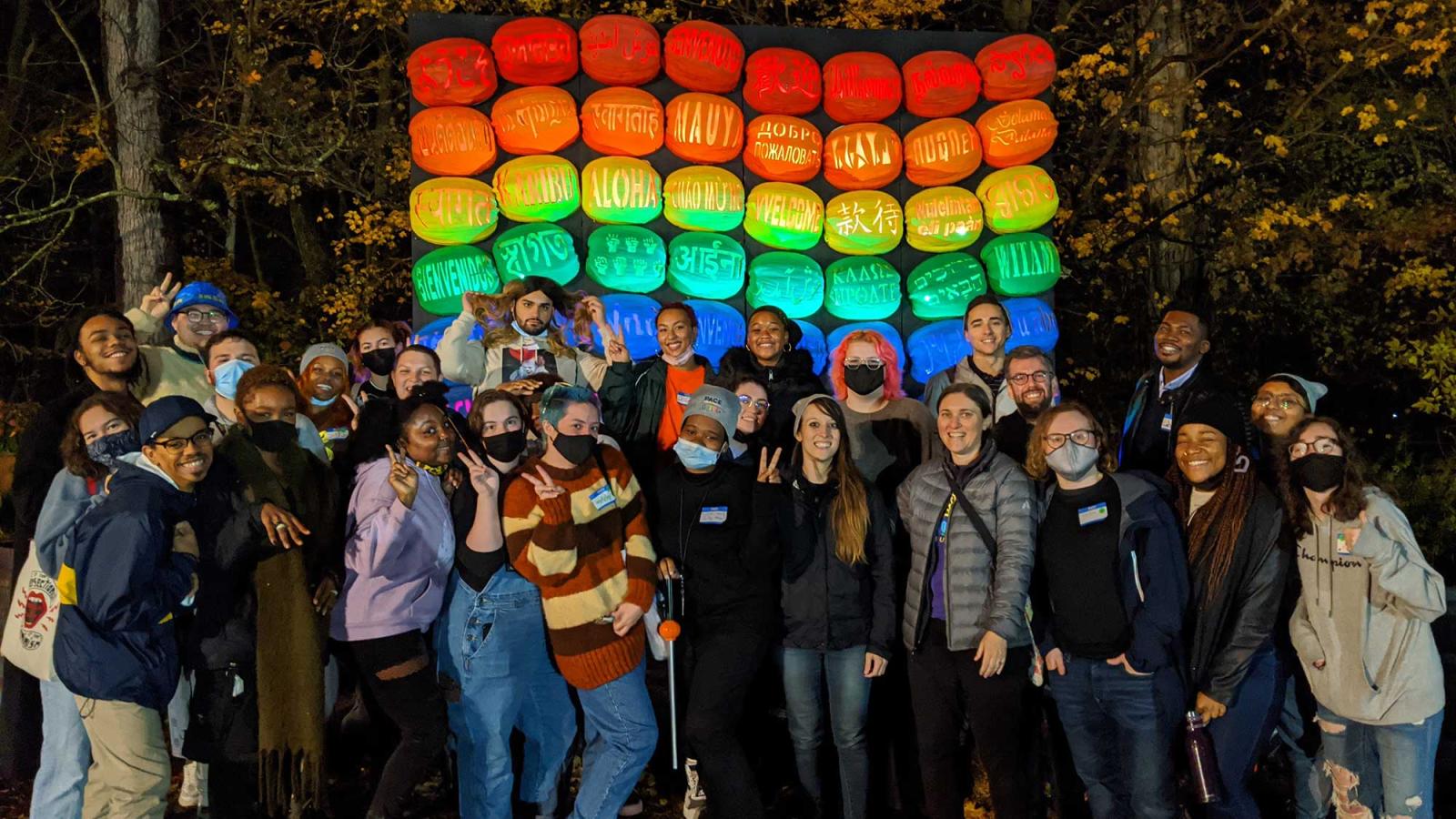
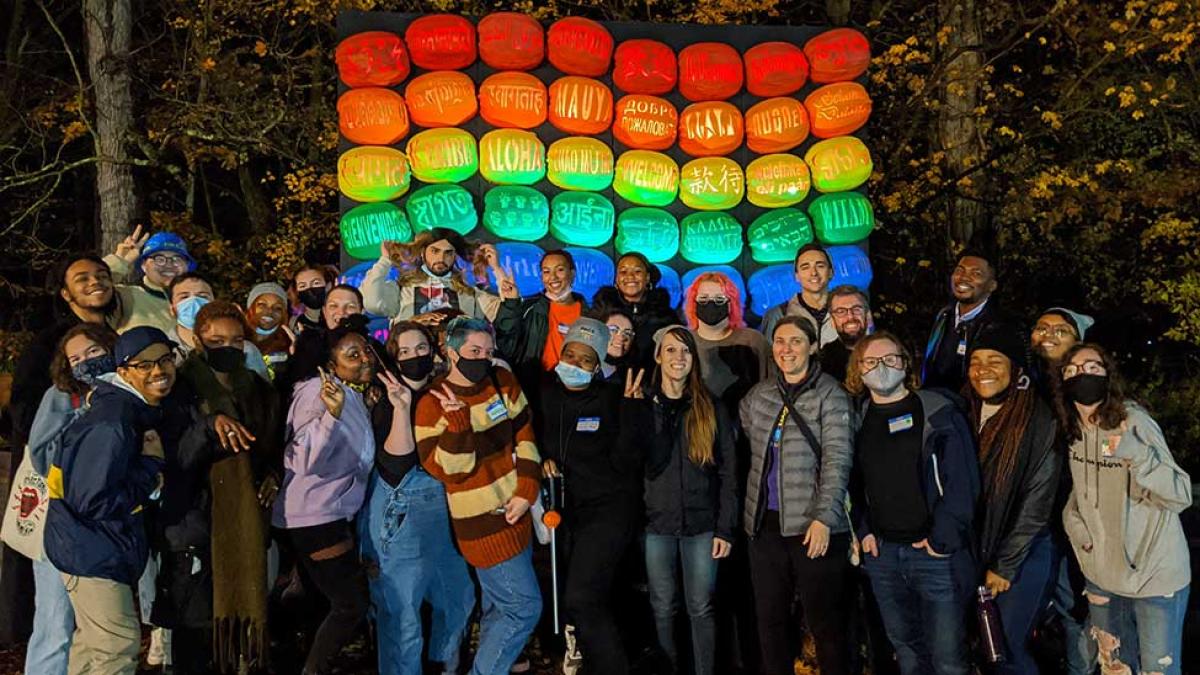
Campus Pride Ratings Cite Inclusiveness, Safety, and Campus Resources for LGBTQ+ Students, Faculty, and Staff
Pace University has been named as one of the 40 best colleges and universities across the country for LGBTQ+ students by Campus Pride, the preeminent resource for LGBTQ+ leadership development, inclusion and advocacy within higher education, the university today announced.
In being recognized as “Best of the Best,” Campus Pride noted that Pace and other schools on its list create a safe, welcoming, and inclusive environment for students, faculty, and staff alike.
“At Pace University, we’re proud to support our many different and diverse communities, and I'm excited to see our LGBTQA+ Centers celebrated as the Best of the Best,” said Marvin Krislov. “This honor recognizes our work to develop ways to best support our LGBTQ+ Pace students, and it will encourage and bolster our efforts to do even more.”
Pace, which has campuses in New York City and Pleasantville, is among 40 four-year campuses from across the country that have achieved 5 out of 5 stars on the Campus Pride Index (CPI), the definitive national benchmarking tool measuring LGBTQ-friendly policies, programs, and practices.
“Students, prospective students, and their families, along with faculty and staff members, deserve to know whether they will be safe on campus, so they can make the best choices for their own academic success – and by creating inclusive, safe environments these colleges are taking responsibility for all students,” said Shane Windmeyer, Campus Pride Executive Director.
Dr. Genny Beemyn, the coordinator of Campus Pride's Trans Policy Clearinghouse, noted that campuses are increasingly doing more to support their trans students and that many institutions are taking steps forward in their efforts to be trans-inclusive.
Pace has consistently prioritized inclusivity since forming LGBTQ+ Centers on campus 11 years ago. Among programs and services offered through the Division of Diversity, Equity, and Inclusion to the community are Q-Camp, a weekend leadership retreat; Lavender Graduation and Awards Ceremony; academic and career advising for LGBTQ+ students; programs that support transgender, gender nonconforming, and nonbinary students; events with drag queens; and policy work for inclusion.
For Julian Clarke-Dixon, a junior resident assistant and media and communications major, Pace’s support is essential for many students.
“The LGBTQA+ Center has made Pace feel more inclusive and safer for all students,” Clarke-Dixon said. “As a queer person of color, it has provided a community that I did not have to hide from, but instead can flourish in. The LGBTQA+ Center's work shows that established organizations or structures can move to being more anti-racist and intersectional which provides an uplifting and open space for future generations to express themselves.”
- Campus Pride’s 2022 BEST OF THE BEST Colleges & Universities is online.
- The Campus Pride Index full listing of LGBTQ-friendly colleges and universities is available.
Elizabeth Dank '05: #LifeAtTikTok
Learn more about Elizabeth, her time at Haub Law, her career and current role at TikTok, what continues to inspire her career path, and more in this Alumni Q+A.
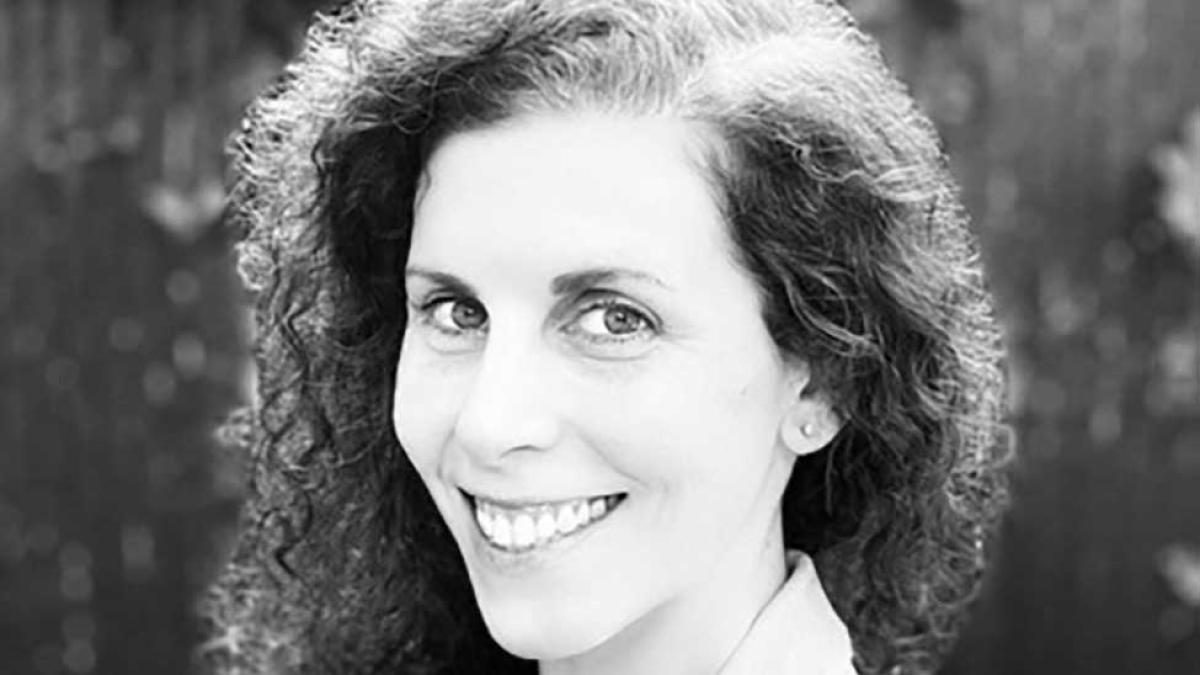
Elizabeth Dank ’05 recently embarked on a new journey in her career: Product Policy Manager for Adult Nudity and Sexual Activity on the Global Trust and Safety team at TikTok. Elizabeth has always loved to dig in to complex problems and has worked in the field of gender-based violence throughout her career in both legal and non-legal roles – crediting, in part, the Pace Women’s Justice Center for directly influencing the course of her career. Prior to her new role at TikTok, she spent time with the New York City Administration for Children's Services (ACS), in the Queens District Attorney’s Office in the Domestic Violence Unit, and eleven years with the New York City Mayor's Office to End Domestic and Gender-Based Violence (ENDGBV). Learn more about Elizabeth, her time at Haub Law, her career and current role at TikTok, what continues to inspire her career path, and more in this Alumni Q&A.
Let’s jump right in – you recently started a position at TikTok as a Product Policy Manager focused on Adult Nudity and Sexual Activity – what is your day-to-day like there?
Across the Trust and Safety Issue Policy team, we are developing and enforcing cutting-edge policies and practices aimed at keeping the platform safe and welcoming. I am working specifically on Adult Nudity and Sexual Activity and focusing on policies related to exploitation and abuse. It has been so interesting to translate my on-the-ground work in gender-based violence into a tech space. Unfortunately, the harms that can occur IRL can also happen in online communities and we are working hard to proactively prevent and address abuse and exploitation and provide support for survivors. It is a huge responsibility to know that the work we are doing will impact over 1 billion users across the globe.
What is it like to work for a huge social media platform?
#LifeatTikTok is different than anything I have experienced professionally! I am so impressed by the focus on employee well-being, the transparency and communication from leadership and the ways our commitment to creativity and joy on the platform are endlessly woven into the workplace too. Not only am I passionate about the work I get to do here, I am also having fun!
You have spent your career primarily focused combatting domestic violence and gender-based violence – thank you – I imagine at times that this can be very emotionally draining, what keeps you going and/or what have been the most fulfilling parts of your job?
I have two little girls who inspire me daily. I hope that through my work I might have a small impact on making the world they grow up in safer and more equitable.
Jumping back for a second, you started your legal career as an agency attorney with the New York City Administration for Children's Services (ACS) and then as an ADA in the Queens District Attorney’s Office in the Domestic Violence Unit – can you talk about those experiences?
Starting my career in litigation roles provided me with invaluable experience and numerous transferable skills in public speaking, writing, analysis, negotiation, mediation, thinking on your feet - just to name a few! There is often a sink-or-swim approach to new hires in government litigation positions, which was terrifying at the time but really forced me to work hard and strengthen my skills every day.
Working directly with families and survivors who experienced child abuse, domestic violence and sexual violence was both incredibly difficult and rewarding. The families I came into contact with through these positions left indelible impressions on me and motivated me to seek to improve NYC systems and remove barriers.
On a personal level, while at these two agencies, I was fortunate to have incredibly supportive bosses and colleagues who became lifelong friends. And I will always be thankful to ACS, as they unknowingly paired me with an officemate who would, years later, become my husband!
From the DA’s Office, you transitioned to the New York City Mayor's Office to End Domestic and Gender-Based Violence (ENDGBV), where you spent the last 11 years doing impactful work in a variety of roles, what was your day-to-day like there?
No two days (or even hours!) were the same at ENDGBV and that was one of the things that made the work so interesting and engaging. It was such a privilege to work alongside my colleagues and our partners to develop, enhance and innovate the City's response to gender-based violence. We wrote novel legislation, developed critical policies, designed first-of-its-kind programming, and worked every day to strategically coordinate and align approaches across numerous City agencies to enhance support for survivors. My ENDGBV colleagues are some of the most passionate people I have met and it was incredible to work in an office that was so grounded and focused on a shared mission.
Did you always want to be a lawyer?
Actually, no! I originally thought I might be a psychologist or a social worker. I even grappled with this during my first year of law school and wondered whether I had chosen the right path! I'm glad I persevered though as I've really enjoyed my career as a lawyer and believe that a legal education is transferable in so many beneficial ways.
What was your path to law school and why Pace?
During my junior year in college, I interned at a domestic violence shelter. Working closely with shelter staff and resident survivors, I was able to better understand both the barriers and resources that impacted survivors. This experience largely inspired me to go to law school and continue working to support survivors as an attorney. I chose Pace because of the excellent public interest program, immersive clinical and externship options and access to the legal community in NYC.
During my junior year in college, I interned at a domestic violence shelter. Working closely with shelter staff and resident survivors, I was able to better understand both the barriers and resources that impacted survivors. This experience largely inspired me to go to law school and continue working to support survivors as an attorney.
What were some of your most impactful experiences during your time at Pace?
Participating in the domestic violence clinic through the Pace Women's Justice Center directly influenced the course of my career. I believe strongly in the importance of clinical programming and highly recommend it to all new law students! I also had great domestic violence-related internships at community-based organizations and government agencies that helped to inform my career path. Rebecca Fialk was my clinical instructor and was fantastic at guiding me through my first client interviews and court appearances and motivating me to pursue litigation early in my career. I also had an excellent experience in trial advocacy with Robert Altchiler and found the skills I developed there so helpful in my first years as a litigator and in other roles throughout my career. One of the courses that stuck with me the most was the Prisoner's Rights class with Professor Michael Mushlin. It helped me to stay balanced and grounded as a prosecutor and inspired me to dig deeper into issues of sexual violence experienced by people in custody.
Do you have any advice for current or future law students?
If you are interested in the public sector, explore clinics, internships and volunteer opportunities across different agencies and organizations and be open to the different paths your legal career may take you. My career took many pivots and turns that I did not anticipate and it has been wonderful to continue to learn and grow in different ways with each position.
What are some of your passions aside from the law?
Outside of work, you can often find me exploring NYC, traveling with my family, going for a bike ride or baking with my kids.
Judge's race in KY brings up unique question
“Whether it's a son, daughter, whoever it is, and that person holds a position of power as a D.A., the judge can't preside over those cases that's clear ethics,” said Bennett Gershman. Gershman is a law professor at Pace University in New York who lectures on judicial and prosecutorial ethics. LEX 18 reached out to him to get an outside perspective. “It seems to me the voters should at least know that this judge is gonna be, let's just say, handicapped because of his inability to preside over criminal cases,” Gershman said.



